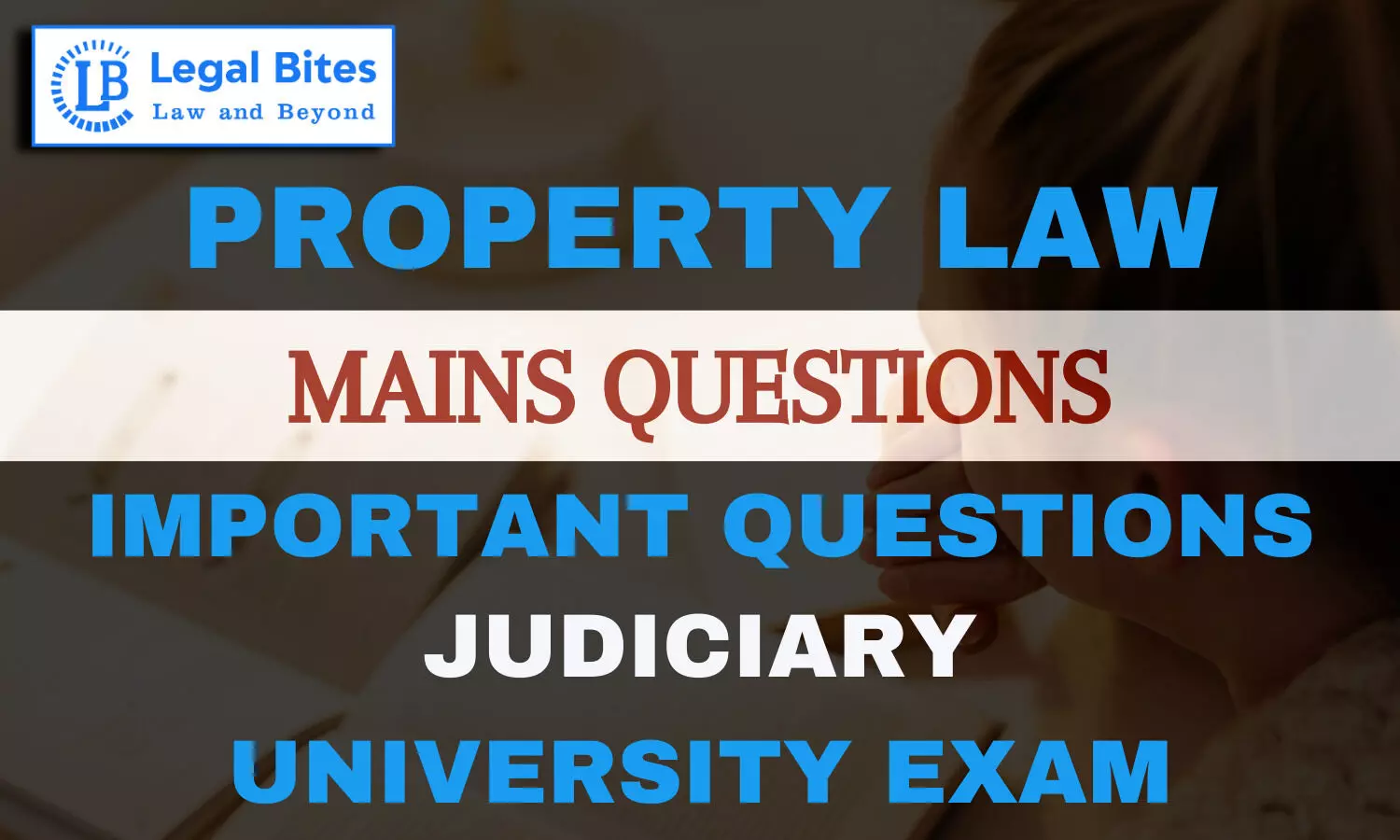Discuss about transfer by ostensible owner and transfer by unauthorised person, who subsequently.....?
Find the answer to the mains question of Property Law only on Legal Bites.;

Question: Discuss about transfer by ostensible owner and transfer by unauthorised person, who subsequently acquires interest in property transferred? [MPJS 2021]Find the answer to the mains question of Property Law only on Legal Bites. [Discuss about transfer by ostensible owner and transfer by unauthorised person, who subsequently acquires interest in property transferred?]AnswerA transfer by an ostensible owner is governed by Section 41 of the Transfer of Property Act, 1882. This...
Question: Discuss about transfer by ostensible owner and transfer by unauthorised person, who subsequently acquires interest in property transferred? [MPJS 2021]
Find the answer to the mains question of Property Law only on Legal Bites. [Discuss about transfer by ostensible owner and transfer by unauthorised person, who subsequently acquires interest in property transferred?]
Answer
A transfer by an ostensible owner is governed by Section 41 of the Transfer of Property Act, 1882. This section deals with a situation where a person, though not the real owner, is allowed by the real owner to represent himself as the owner and sell the property. If a third party, acting in good faith, purchases the property from the ostensible owner, the law protects the third party's purchase.
Key Elements:
- Consent of the Real Owner: The real owner should have knowingly permitted or made the ostensible owner appear to be the true owner.
- Good Faith by Transferee: The transferee must act in good faith, meaning they must believe that the ostensible owner has the authority to transfer the property.
- Consideration: The transferee must have paid a consideration for the property. This provision does not apply to transfers made without any payment.
Legal Effect:
- If the transfer meets the above conditions, the real owner cannot challenge the transaction, and the transfer will be valid.
Transfer by Unauthorised Person, Who Subsequently Acquires Interest in the Property Transferred
This type of transfer is covered under Section 43 of the Transfer of Property Act, 1882, which is known as the "doctrine of feeding the estoppel". It applies in cases where a person, who does not have the title or authority to transfer the property, sells it to a transferee. If, after the sale, the transferor acquires an interest in the property, the law compels the transferor to pass the interest to the transferee.
Key Elements:
- Transfer by Unauthorised Person: At the time of the transfer, the person does not have the title or authority over the property.
- Subsequent Acquisition of Interest: After the transfer, the transferor acquires the interest or authority they previously lacked.
- Transferee in Good Faith: The transferee must have acted in good faith and paid consideration.
Legal Effect:
- Once the unauthorised transferor acquires the interest in the property, they are bound to transfer it to the transferee who purchased the property under the belief that the transferor had the authority to sell it.
- This prevents the transferor from denying the transfer at a later stage once they have acquired the right to transfer the property.
Conclusion
In both cases, the law aims to protect the transferee who acts in good faith. In a transfer by an ostensible owner, the real owner is estopped from challenging the transfer, while in a transfer by an unauthorised person, the transferor is compelled to perfect the transfer once they acquire the necessary interest in the property. Both provisions safeguard the interests of honest purchasers while preventing misuse by owners or unauthorised persons.



